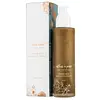What's inside
What's inside
 Key Ingredients
Key Ingredients

No key ingredients
 Benefits
Benefits

 Concerns
Concerns

 Ingredients Side-by-side
Ingredients Side-by-side

Aloe Barbadensis Leaf Juice
Skin ConditioningGlycerin
HumectantWater
Skin ConditioningMontmorillonite
AbsorbentHibiscus Sabdariffa Flower
Skin ConditioningMacrocystis Pyrifera Extract
Skin ConditioningChondrus Crispus Extract
Skin ConditioningSodium Hyaluronate
HumectantSodium PCA
HumectantPantothenic Acid
Skin ConditioningProline
Skin ConditioningHydroxyproline
Skin ConditioningGalactoarabinan
Camellia Sinensis Leaf
PerfumingCurcuma Longa Root
Skin ConditioningCalendula Officinalis Flower
Skin ConditioningChamomilla Recutita Flower Powder
Skin ConditioningCamellia Sinensis Leaf Extract
AntimicrobialGlycolic Acid
BufferingEchinacin
MoisturisingSambucus Nigra Fruit Extract
AstringentLeuconostoc/Radish Root Ferment Filtrate
AntimicrobialPhenethyl Alcohol
MaskingEthylhexylglycerin
Skin ConditioningAloe Barbadensis Leaf Juice, Glycerin, Water, Montmorillonite, Hibiscus Sabdariffa Flower, Macrocystis Pyrifera Extract, Chondrus Crispus Extract, Sodium Hyaluronate, Sodium PCA, Pantothenic Acid, Proline, Hydroxyproline, Galactoarabinan, Camellia Sinensis Leaf, Curcuma Longa Root, Calendula Officinalis Flower, Chamomilla Recutita Flower Powder, Camellia Sinensis Leaf Extract, Glycolic Acid, Echinacin, Sambucus Nigra Fruit Extract, Leuconostoc/Radish Root Ferment Filtrate, Phenethyl Alcohol, Ethylhexylglycerin
Ingredients Explained
These ingredients are found in both products.
Ingredients higher up in an ingredient list are typically present in a larger amount.
Glycerin is already naturally found in your skin. It helps moisturize and protect your skin.
A study from 2016 found glycerin to be more effective as a humectant than AHAs and hyaluronic acid.
As a humectant, it helps the skin stay hydrated by pulling moisture to your skin. The low molecular weight of glycerin allows it to pull moisture into the deeper layers of your skin.
Hydrated skin improves your skin barrier; Your skin barrier helps protect against irritants and bacteria.
Glycerin has also been found to have antimicrobial and antiviral properties. Due to these properties, glycerin is often used in wound and burn treatments.
In cosmetics, glycerin is usually derived from plants such as soybean or palm. However, it can also be sourced from animals, such as tallow or animal fat.
This ingredient is organic, colorless, odorless, and non-toxic.
Glycerin is the name for this ingredient in American English. British English uses Glycerol/Glycerine.
Learn more about Glycerin